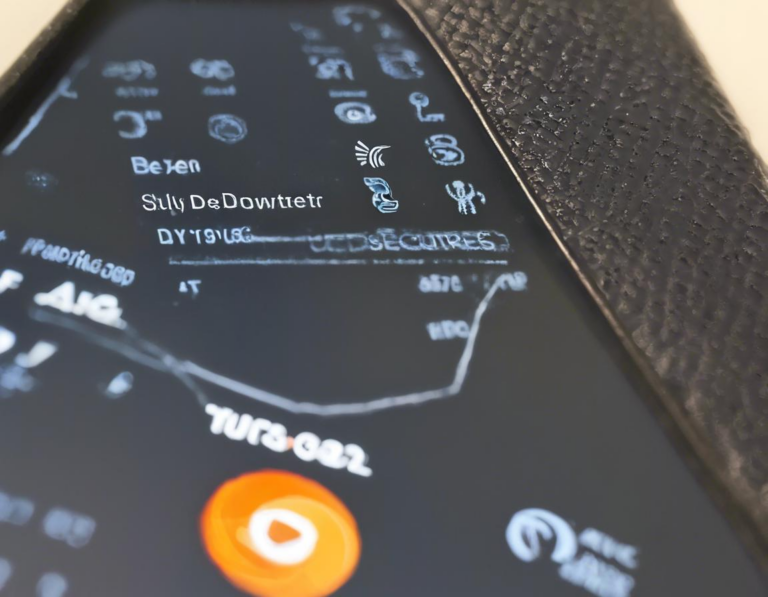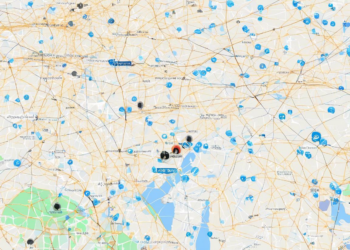Using Downdetector to Check AT&T Outages: A User Guide

Are you experiencing problems with your AT&T service? You’re not alone! AT&T, like any large telecommunications provider, can experience occasional outages. But how do you know if the issue is on your end or a widespread problem? That’s where Downdetector comes in. This free online tool can help you quickly determine if there are reported AT&T outages in your area.
This comprehensive guide will walk you through using Downdetector to check for AT&T outages, providing tips and insights to help you troubleshoot your service issues.
What is Downdetector?
Downdetector is a website and mobile app that aggregates real-time reports from users experiencing problems with various online services, including internet, cable, phone, and streaming platforms. The platform uses crowdsourced data to create outage maps and provide insights into the nature of the service disruptions.
How Downdetector Works
Downdetector works by allowing users to report service issues. When users encounter problems with a service like AT&T, they can submit reports to Downdetector. These reports include:
- Location: Users specify their location, allowing Downdetector to create localized outage maps.
- Service Type: Users select the specific service they are experiencing problems with, like AT&T internet, AT&T TV, or AT&T mobile service.
- Problem Description: Users can provide details about the issue they’re facing, helping Downdetector understand the nature of the outage.
Downdetector then analyzes this data to generate:
- Outage Maps: Interactive maps showing the geographical areas where users are reporting issues.
- Real-Time Graphs: Charts displaying the number of outage reports over time, providing a visual overview of the outage’s severity.
- Trending Issues: Downdetector identifies common problems reported by users, offering insights into the type of service disruption.
How to Use Downdetector for AT&T Outages
Using Downdetector to check for AT&T outages is simple and straightforward:
- Visit the Downdetector Website: Navigate to the Downdetector website (https://downdetector.com/).
- Select AT&T: Use the search bar at the top of the page to search for “AT&T.”
- Explore the Outage Map: The map will display the geographical areas where users are reporting issues.
- View Real-Time Graphs: Check the graphs to see the number of outage reports over time, indicating the severity and duration of the problem.
- Read Trending Issues: Explore the “Trending Issues” section to see what users are reporting about the outage.
Interpreting Downdetector Results
While Downdetector can be a valuable tool for checking AT&T outages, it’s crucial to interpret the results with a critical eye. Here are some things to keep in mind:
- Not All Reports Are Accurate: Some reports may be false positives, meaning users might be experiencing temporary issues or problems unrelated to a broader outage.
- Data Is Crowdsourced: Downdetector relies on user reports, which may not be entirely comprehensive or accurate.
- Outage Maps May Be Inaccurate: The outage maps are based on user-reported locations, which might not be entirely precise.
Tips for Troubleshooting AT&T Outages
If Downdetector indicates a possible AT&T outage, consider these troubleshooting steps:
- Check Your Equipment: Ensure that your modem and router are properly plugged in and powered on.
- Restart Your Equipment: Try restarting your modem and router to resolve minor network glitches.
- Contact AT&T Support: If the issue persists, contact AT&T’s customer support team for assistance. They can provide information about any known outages in your area and offer troubleshooting advice.
- Check for Updates: Make sure your modem and router have the latest firmware updates installed.
- Run a Speed Test: Use an online speed test to check your internet connection’s speed and performance.
Alternatives to Downdetector
While Downdetector is a popular tool for checking outages, other resources can also provide valuable information:
- AT&T Outage Map: AT&T provides its own outage map on its website, which can be accessed through their customer support portal.
- Social Media: Platforms like Twitter and Facebook often have users reporting outages, which can provide insights into the issue’s scope.
- Local News: Local news outlets may report on major outages in your area.
Benefits of Using Downdetector
Using Downdetector offers several advantages when checking for AT&T outages:
- Real-Time Information: Downdetector provides updated data on service disruptions, giving you a clear picture of the situation.
- Easy to Use: The platform is intuitive and easy to navigate, even for non-technical users.
- Free Access: Downdetector is a free service, providing valuable information without any cost.
- Comprehensive Coverage: Downdetector tracks outages for a wide range of services, not just AT&T.
- Crowdsourced Data: The platform leverages user reports, providing a more accurate representation of outage situations.
Conclusion
Downdetector is a valuable tool for staying informed about potential AT&T outages. By providing real-time information on reported issues and outage maps, it helps users understand the scope and nature of service disruptions. By following the tips and insights provided in this guide, you can effectively use Downdetector to troubleshoot your AT&T service issues and stay connected.
Remember, Downdetector is just one tool in your troubleshooting arsenal. By combining it with other resources like AT&T’s support portal, social media, and local news, you can gain a comprehensive understanding of any service disruptions you may encounter.













